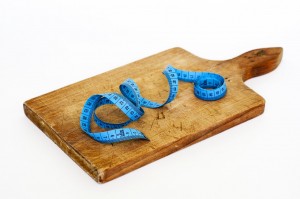Watch Your Waist
Health experts use waist circumference to screen patients for possible weight-related health problems, and it’s useful for everyone to keep an eye on this measurement regularly. It can be done by measuring with a tape but, if we’re honest, we can also feel changes in the waistband of skirts or trousers.
Why Does Waist Circumference Matter?
Measuring the size of your waist can help to understand your risk for certain health conditions that are related to the location of fat in the abdominal area, such as heart disease and type 2 diabetes. In saying that, waist circumference alone can’t determine whether you have a medical condition or, indeed, whether you’ll get one in the future.
NHS Guideline Measurements
To measure waist circumference correctly, you should stand up, and wrap the tape measure around the widest part of your stomach, across your belly button. The tape measure should rest gently on your skin. Once the tape is positioned correctly, breathe in gently and take the measurement on the exhale.
According to NHS guidelines, if your waist measurement is greater than the numbers indicated, your risk for weight-related health problems is higher than normal.
94cm (37ins) or more for men
80cm (31.5ins) or more for women
With a higher risk of weight-related health problems at the following numbers:
102cm (40ins) or more for men
8cm (34ins) or more for women
Ways to Reduce Your Measurement
If your waist circumference is too high, you’ll need a plan to lose body fat, but, as you’ll know from my previous articles, it’s not possible to ‘spot’ reduce. Your abdominal measurement will gradually reduce as you lose overall body fat mass.
The first step to reducing abdominal fat is to evaluate your eating habits. Are you overeating? Do you snack between meals? Do you consume soft drinks or sweetened juice drinks? Do you buy processed foods that have little nutritional value?
Once you’ve considered what you eat and drink, then think about increasing your activity levels so that you’re more active every day. Even making seemingly small changes such as taking the stairs rather than using the lift and going out for a walk every day really add up in your fat burning quest.
There are many different ways to evaluate health and risk for disease, and your waist measurement is only one of them. But the good news is that making small changes to your lifestyle every day can whittle your waist measurement, as well as making a big difference to your overall health.


